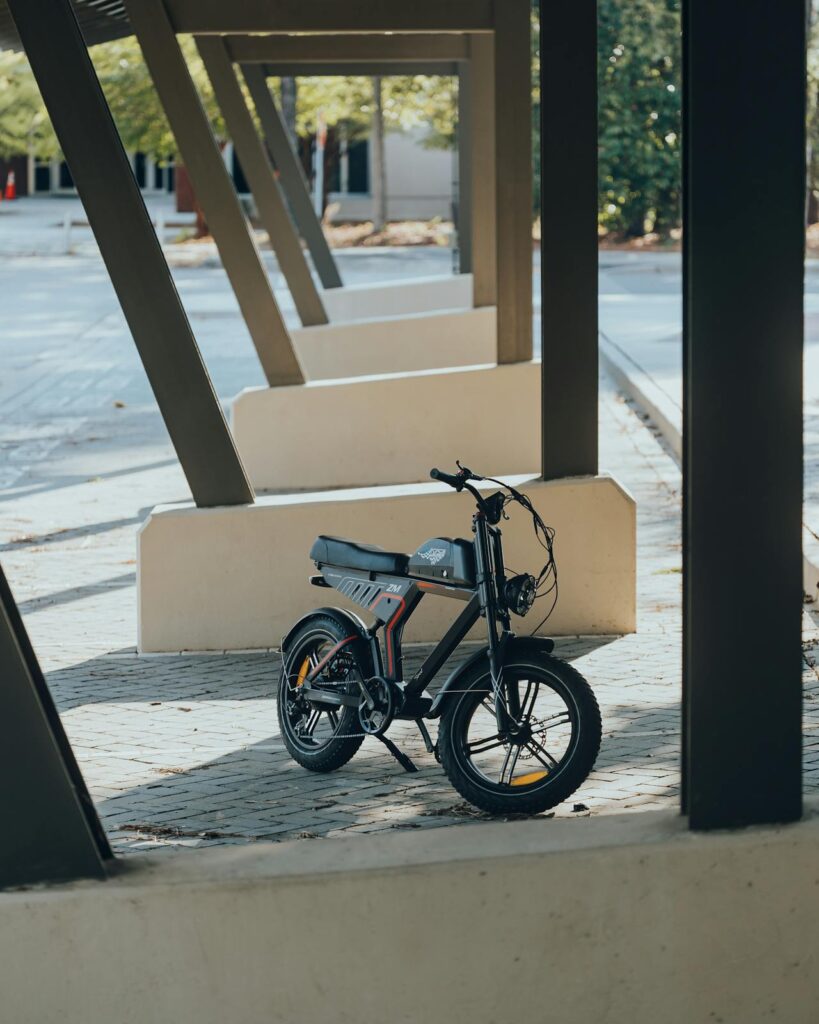Foldable e-bikes have become an increasingly popular transportation choice in Singapore, offering a perfect blend of convenience, portability, and sustainability. Whether you’re commuting to work, running errands, or enjoying a leisurely ride through park connectors, choosing the right foldable e-bike tailored to your lifestyle is essential. With a growing range of models, specifications, and features available on the market, making an informed decision can be overwhelming.
This guide breaks down the key considerations to help you choose the best foldable e-bike for your needs in Singapore, ensuring that your purchase is practical, legal, and rewarding.

1. Understand the Legal Requirements in Singapore
Before diving into specs and features, it’s crucial to understand the legal framework around e-bikes in Singapore. The Land Transport Authority (LTA) has specific regulations for Personal Mobility Devices (PMDs), including Power-Assisted Bicycles (PABs).
Key LTA requirements include:
- The e-bike must be type-approved, sealed, and registered with the LTA.
- It must bear an LTA orange seal and a license plate.
- The e-bike must have pedal-assist only (no throttle).
- Maximum motor output must not exceed 250W.
- Speed must be capped at 25 km/h.
- Riders must wear a helmet and be at least 16 years old.
Failure to comply with these regulations can result in fines, confiscation of the device, or legal consequences. Always check if the model you’re considering is LTA-approved.
2. Consider Your Commute Distance and Terrain
Your daily route plays a huge role in determining which foldable e-bike suits you best.
- Short Distance (Under 10 km/day): If your commute is short and mostly on flat ground, a lightweight foldable e-bike with a smaller battery and simpler motor setup is sufficient.
- Medium Distance (10–25 km/day): For moderate distances, look for an e-bike with a battery range of 40–60 km per charge and mid-tier components to handle regular use.
- Long Distance (25+ km/day): If you commute long distances or plan full-day rides, opt for models with extended battery range (above 70 km), strong motor torque, and comfortable riding geometry.
Also, consider whether your route includes hills or flyovers. For hilly areas, choose an e-bike with a more powerful motor (within legal limits) and multiple gears to ease climbing.
3. Evaluate Battery Life and Charging Time
Battery capacity determines how far you can go on a single charge, and it directly affects your riding experience.
- Battery capacity is measured in watt-hours (Wh). For reference, a 36V 10Ah battery = 360Wh, which can usually offer a range of 40–60 km, depending on terrain and rider weight.
- If you don’t have time for frequent charging, look for batteries with fast charging features and replaceable battery options for added flexibility.
- Check whether the battery is removable—this is helpful for people living in apartments where charging the bike indoors isn’t practical.
Always choose lithium-ion batteries from reliable brands (like LG, Panasonic, or Samsung) for durability, efficiency, and safety.
4. Weight and Portability
Since you’re choosing a foldable e-bike, portability is key.
- The weight of most foldable e-bikes ranges from 15 kg to 25 kg. If you plan to carry your e-bike up stairs, into MRT stations, or onto buses, a lighter model is essential.
- Consider how compactly the bike folds. Some models can fit under a desk or in a closet, while others require more storage space.
- Check the folding mechanism: Does it fold in one or two steps? Is it secure and quick to use?
If portability is your top concern, prioritize lightweight frames (aluminum or carbon fiber) and small folded dimensions.
5. Frame Design and Build Quality
The design and durability of the frame are critical for both safety and comfort.
- Look for a sturdy frame made from aircraft-grade aluminum or reinforced alloy. A poorly built frame can flex or break over time.
- Suspension (front fork or rear shock) can help if your route includes bumpy roads or uneven paths.
- Wheel size impacts comfort and speed. While 14″ or 16″ wheels are more compact, 20″ wheels strike a better balance between portability and ride quality for Singapore roads.
- Make sure the frame fits your body size. Many foldable e-bikes offer adjustable seatposts and handlebars to accommodate different heights.
6. Riding Comfort and Ergonomics
A good ride goes beyond specs—it’s about how you feel on the bike.
- Test ride different models to assess seat comfort, handlebar height, and ride stability.
- A step-through frame is ideal for riders who prefer easy mounting and dismounting, especially in office wear or skirts.
- Ensure the e-bike has puncture-resistant tires or internal hub gears to reduce maintenance and increase reliability.
Accessories like mudguards, lights, rear racks, and phone holders add value and can greatly improve your experience in daily use.
7. Motor Type and Performance
There are two common motor types in foldable e-bikes:
- Hub Motors: These are located in the wheel and are more common. They offer quiet operation and low maintenance. Good for flat terrains.
- Mid-Drive Motors: Located at the crank, offering better weight distribution and torque. More efficient on hilly routes but usually more expensive.
Most LTA-compliant e-bikes in Singapore use 250W hub motors, which are sufficient for urban commuting. Ensure the motor provides smooth pedal assistance and not a jerky or delayed power output.
8. After-Sales Support and Warranty
E-bikes are a long-term investment, and having local support matters.
- Choose brands or sellers that offer local servicing, warranty coverage, and spare parts availability in Singapore.
- A typical e-bike should come with at least a 1-year warranty on the motor and battery.
- Look for shops that offer test rides, trade-in options, and financing plans if needed.
Buying from a reputable local retailer also ensures you receive an LTA-approved and registered bike, which saves you the trouble of doing it yourself.
9. Budget and Value for Money
Foldable e-bikes in Singapore can range from SGD $900 to $3000 or more, depending on quality, battery, and features.
- Budget Models (under $1500): Good for light commuting and occasional use. Be careful about battery lifespan and build quality.
- Mid-Range (SGD $1500–$2200): Best value for daily commuters. Offers balanced features, battery life, and solid warranty support.
- Premium (above $2200): Ideal for serious riders or long-distance commuters, with extended range, better build, and advanced features like GPS, hydraulic brakes, or suspension.
Make sure to factor in helmet, lock, and accessories into your overall budget.
10. Personal Needs and Use Case
Finally, choose a bike that fits your lifestyle.
- Do you need to carry groceries or cargo? Look for a rear rack or basket-ready model.
- Will you travel during peak hours on the MRT? Get a model with quick folding and compact size.
- Do you ride in the rain often? Water-resistant electronics and anti-slip tires are a must.
The best e-bike is one that meets your practical needs and makes your commute more enjoyable and sustainable.
Conclusion
Choosing the right foldable e-bike in Singapore involves balancing your commute habits, comfort preferences, and legal compliance. With increasing awareness of sustainability and growing traffic congestion, investing in a foldable e-bike is not just a smart transport choice—it’s a lifestyle upgrade.
By considering factors such as battery range, weight, motor type, and frame design, you can find an e-bike that fits seamlessly into your daily routine. Whether you’re looking to reduce travel costs, save time, or lower your carbon footprint, the right foldable e-bike can transform the way you move around Singapore.
